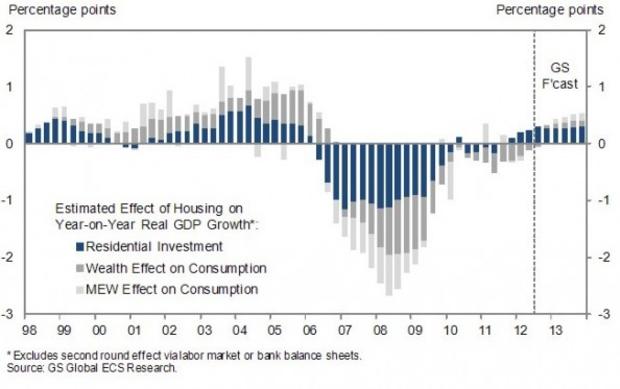Slow economic growth unnerves investors
(MoneyWatch) In a world of diminishing expectations, if the first reading of U.S. GDP starts with a "2" there will be a collective sigh of relief among investors. Who would have thought that a two percent reading on growth would be considered good enough? Well, two percent may be about as good as it gets, considering that that the eurozone remains mired in a debt crisis, China's growth has slowed to a three-year low of 7.4 percent and in the U.S., the "Fiscal Cliff" (the combination of tax increased and spending cuts) looms as potential thorn in the side of future growth.
Of course everyone wants to see U.S. growth return to its longer term average of over three percent, but history tells us that we have a long way to go. Last week, Carmen M. Reinhart and Kenneth S. Rogoff, authors of "This Time Is Different: Eight Centuries of Financial Folly," thought it might be time to remind us that the current pace of U.S. growth is pretty much on-target, given the type of recession that we have recently endured.
On Bloomberg.com, Reinhart and Rogoff reiterated "that recessions associated with systemic banking crises tend to be deep and protracted and that this pattern is evident across both history and countries... Today, there can be little doubt that the U.S. has experienced a systemic crisis -- in fact, its first since the Great Depression. Before that, notable systemic post-Civil War financial crises occurred in 1873, 1893 and 1907."
Because the U.S. has experienced the "bad" kind of recession, it was never in the cards to see a classic "V-shaped recovery," where the economy returns to its old self within a year or two. So how much longer will it take? Reinhart and Rogoff define recovery as "the time it takes for per capita GDP to return to its pre-crisis peak level."
For all global post-WW II systemic crises, it took about four and a half years to regain lost ground; in 14 Great Depression episodes around the world (including the U.S.) it took 10 years on average. In looking at the U.S. only, for the 1873 and 1893 (peak is 1892) crises, it was five years; for the Panic of 1907 (peak is 1906), it was six years; for the Depression, it took 11 years.
Let's assume it will take 7 to 10 years to return to the pre-crisis peak in Q4 2007. That means the U.S. economy is five years into the mission and in fact, there are some encouraging signs that this recovery could fall on the lower end of the range.
Because the epicenter of the crisis was housing, that sector continued to be a significant drag on economic growth. But the housing market is showing signs of life: Prices have stabilized and are starting to increase; starts are up sharply; new home sales are rising and existing home inventory is falling. The recovery in housing should start to make a direct impact on the economy via construction of new homes, improvements and alterations, and broker commissions on sales of new and existing homes. Economists also note that as prices start to rise, refinancing and borrowing activity increase and confidence improves. Taken together, housing could add 0.3 percent to total GDP next year, according to Goldman Sachs.
This week, in addition to the fist reading of Q3 GDP (Q2 was a paltry 1.3 percent, especially bad due to the drought and Q1 was 2 percent), there will be another round of housing data and the Federal Open Market Committee will hold its last meeting before the election. The drama has faded for the Fed, since the committee has now committed itself to an open-ended bond purchase program contingent on the unemployment rate, which has seen little change since the last meeting.
Earnings season continues, with a few notable tech company reports, including Yahoo, Facebook, Zynga and Apple.
-- DJIA: 13,343, up 0.1 percent on week, up 9.2 percent on year
-- S&P 500: 1,433, up 0.3 percent on week, up 14 percent on year
-- NASDAQ: 3,005, down 1.3 percent on week, up 15.4 percent on year
-- December Crude Oil: $90.44, down 2 percent on week
-- December Gold: $1,724, down 2 percent on week
-- AAA National Average Price for Gallon of Regular Gas: $3.69
THE WEEK AHEAD:
Mon 10/22:
Caterpillar, Yahoo
Tues 10/23:
Facebook, UPS, Xerox
FOMC meeting begins
10:00 Richmond Fed Manufacturing Index
Weds 10/24:
AT&T, Boeing, Zynga
7:00 MBA mortgage purchase applications index
10:00 New Home Sales
10:00 FHFA Home Price Index
12:30 FOMC Meeting Announcement
Thurs 10/25:
Altria, Apple, P&G
8:30 Weekly jobless claims
8:30 Durable Goods
8:30 Chicago Fed Survey
10:00 Pending Home Sales
Fri 10/26:
8:30 Q3 GDP (1st estimate; Q2=1.3%; Q1=2%)
9:55 Consumer Sentiment


